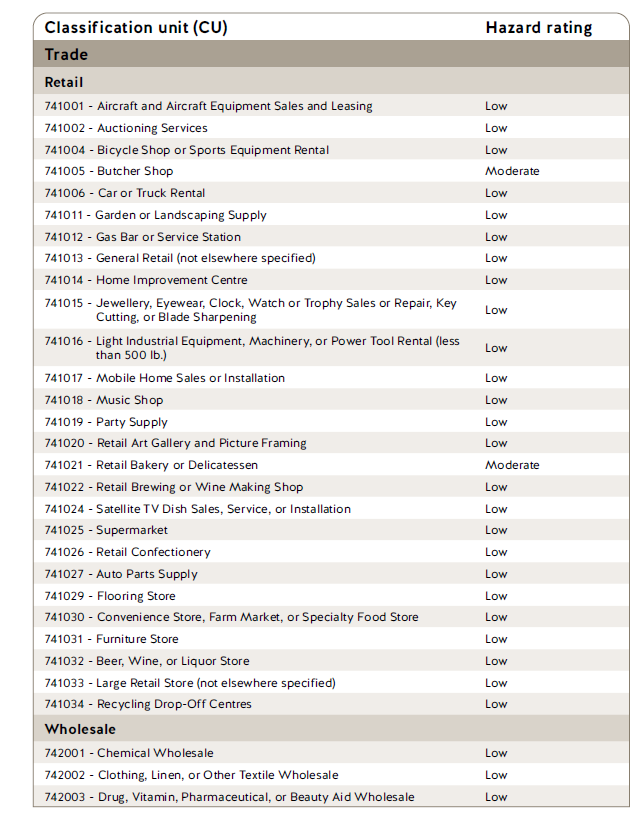First Aid Requirements in British Columbia
Please Note: While the assessment steps shown below work in many businesses, it will not work for ALL businesses. Each business is unique, and the steps below have been simplified to remove some of the less likely complications that can drastically change the results of your assessment. If you need help to conduct a full First Aid Assessment or to purchase First Aid Supplies, you can call our offices at: 778-471-6407 or email us at: info@ohandscanada.ca to schedule a First Aid Assessment for your business.
Employers are responsible for fulfilling First Aid Requirements in British Columbia. All Employers must conduct a First Aid Assessment in British Columbia. The full guidelines are available on the WorkSafeBC website, at OHS Regulations G3.16. This assessment includes multiple different scenarios that most businesses do not need all of the information provided in the full guidelines above, and outlined below is the information that will satisfy many businesses. WorkSafeBC has provided a First Aid Assessment Worksheet in order to track all of the information in the assessment.
1. Maximum Number of Workers on the Workplace
This count includes all supervisors and management as well.
Once it has been determined, record it in your First Aid Assessment Worksheet.
2. Industry Hazard Assessment Rating
This hazard assessment rating is done using your main business undertaking.
The first thing necessary is the Industry Code, which will obtain the Hazard Assessment Rating for your Industry. WorkSafeBC has a tool that will find your Classification Industry Rate. Using either the Search feature, or choosing from the list below that, you can obtain a PDF for your industry. This PDF contains several useful details including descriptions of what businesses that would be categorized within this Classification Unit (CU), as well as typical employees within this Classification Unit. For the purposes of this assessment, we are looking for the Hazard Rating Assignment as shown in the sample below.
Once the Hazard Rating Assignment has been obtained, record it in your First Aid Assessment Worksheet.
3. Surface Distance from Ambulance Base Station (Remote Work Site)
Next, you need to determine whether or not your business is located 30 minutes or more of travel time (by road or water) from an ambulance base station during working hours. Note: This includes having consideration for weather, road conditions, traffic patterns, and other factors that may affect travel and are likely to prevail during working hours. If your work site is more than 30 minutes away from an ambulance base station, then your work site is considered remote. Record this in your First Aid Assessment Worksheet.
4. Accessibility of Work Site to BC Emergency Health Services (BCEHS)
* NEW in 2024 * You need to assess whether or not your work site is less accessible (or poses an undue hazard) to BCEHS attendants. This can include:
- Backcountry areas that are only accessible via all-terrain vehicle (ATV), snowmobile, or similar means,
- Areas where the only means of access involves steep or slippery slopes or embankments (without walkways),
- Private, industrial, or resource roads that cannot be made accessible to BCEHS,
- Areas with rough or complex terrain,
- Areas where there is a significant risk of avalanche, landslide, flood, or other natural hazards
- A ferry
If your work site as a whole is fulfills one of the above criteria, your work site is “less accessible”. Record this on your First Aid Assessment. Otherwise, your work site might include hazardous areas where the hazard poses and undue hazard to BCEHS personnel. This can include:
- Confined Spaces or areas where this is a risk of entrapment,
- Underground work areas,
- Excavations,
- Areas that are only accessible by ladders, scaffold, or temporary work platforms,
- Work areas at high angles, or where an unguarded fall hazard exists,
- Areas where a drowning hazard exists (work on or over water),
- Areas requiring specialized personal protective equipment (PPE) or areas where hazardous atmospheres may exist,
If one of the above criteria applies (or other hazardous areas not accessible to BCEHS attendants), then your work site is “less accessible”, unless, your work site as a whole is not “less accessible”, your work site is not remote, and you have provisions to rescue workers from the hazardous area to an area accessible to BCEHS. Record this on your First Aid Assessment.
If none of the above criteria apply, your work site is not “less accessible”.
5. Determine Minimum Level of First Aid
The OHS Regulations Schedule 3-A Minimum Levels of First Aid has six (6) tables (labeled from Table 1 through Table 6) which list the minimum requirements for first aid. Using the information from steps 1 and 2 above, you can determine which table to use when applying the Number of Workers from step 3 above.
Once the correct table has been determine, use the Maximum Number of Workers to determine your minimum requirements and record it in your First Aid Assessment Worksheet.
A full First Aid Assessment can be a daunting task for any business. OH&S Safety Consulting can help you complete this assessment, and even supply you with the First Aid Kits necessary to fulfill your First Aid Requirements. Call: (778) 471-6407 or email: info@ohandscanada.ca for assistance in completing your First Aid Assessment.
